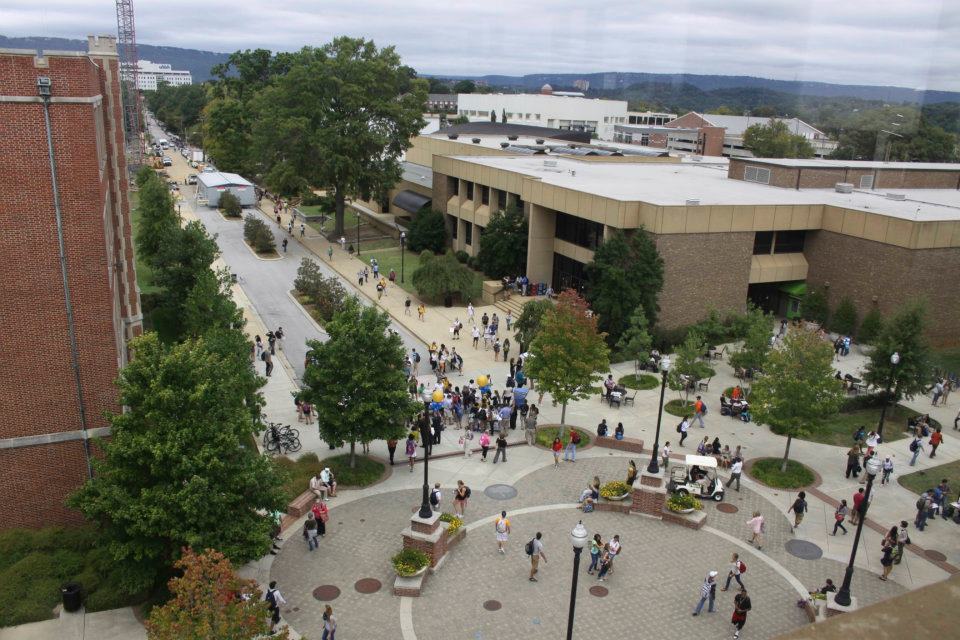DALTON STATE FOUNDATIONAssets reported in the past eight years: Fiscal year runs from April 1-March 31• 2003: $9.6 million• 2004: $9.9 million• 2005: $11.1 million• 2006: $15.2 million• 2007: $12.5 million• 2008: $14.5 million• 2009: $24.3 million• 2010: $28.8 million• 2011: $29.8 millionSource: Dalton State College, Office of Institutional ResearchFAST FACTS• Corporate and foundation giving increased in 2010 by 2.4 percent and 2 percent, respectively.• Alumni giving decreased 0.4 percent; the average alumni gift declined 0.4 percent as well.• Alumni participation declined 10 percent in 2009 to 9.8 percent in 2010.• Nonalumni personal giving declined 1.5 percent.• These results represent a significant improvement from last year's 18 percent drop in alumni giving and 18.4 percent decline in nonalumni personal giving.• The average gift per contributing alumnus is lower today than in 2006.Source: Voluntary Support of Education survey
Charitable giving to colleges and universities nationwide is looking better but it hasn't fully recovered from a 12 percent decrease in 2009 -- the highest drop in more than three decades.
"A significant recovery depends a lot on the economy," said Ann Kaplan, director of the Voluntary Support of Education survey, which tracks private giving to higher education and private k-12.
"We are in a period of uncertainty but I don't think that means institutions should stop doing what they've always done. If people cannot afford to give you money right now, they will at some point," she added.
Charitable contributions to colleges and universities increased 0.5 percent in 2010, reaching $2.8 billion, according to the survey. But adjusted for inflation, support for higher education is 8 percent lower in 2010 than it was in 2006.
At the University of Tennessee at Chattanooga, giving decreased from more than $13 million in 2009 to a little more than $6 million in 2010. So far this year, the foundation has raised more than $8 million, data show.
But when philanthropy to colleges decreased in 2009, UTC and the UC Foundation bucked the trend, said Bob Lyon, vice chancellor for university advancement at UTC.
UTC's UC Foundation's seven-year campaign goal -- which ends Dec. 31-- is $65 million, but it already has raised more than $73 million, Lyon said. A decrease in giving in the middle of a campaign is not uncommon, he said.
At Sewanee: The University of the South, annual giving increased steadily from 2000 to 2008. But after the 2008 market drop and the end of a capital campaign, annual giving decreased by 10 percent, said Jay Fisher, vice president of university relations.
Since then, giving increased to $3.49 million, ending the fiscal year on June 30, 2011, with the second-highest annual giving year on record. A decade ago, annual fund gifts were $2.62 million, Fisher said.
"The annual fund supplies a critical 5 percent of the university budget, money that funds student financial aid, cushions the university from economic shocks and supports a great Sewanee education for undergraduate and graduate students," said Fisher.
As budgets get tighter, donations become even more important, school officials said.
"We are not simply using private gifts to compensate or offset cuts from the state, we are using gifts in more strategic ways to meet needs that otherwise might not be met," said Chuck Cantrell, spokesman for UTC.
The university needs to invest in scholarships beyond what the budget allows in order to recruit and graduate top-level students, he said, as well as pay for professorships and research incentives to attract the best possible faculty members.
At Cleveland State Community College, foundation money stopped being used only for scholarships in 1999, said Beirne Beaty, former executive director of the college's foundation.
"The state started decreasing our allocation, so now we raise money for things such as academic programs, faculty professional development, equipment, for building," she said. "[But] it's still very focused on scholarships because tuition is increasing."
The foundation usually meets its fundraising goals, she said.
Last fiscal year, the goal was to raise $375,000 and it raised about 1 percent more, she said. For that same year, given the state of the economy, the school trustees decided to not increase its goal by 5 percent as it had planned. This year's goal is $390,000, she said.
David Elrod, director of institutional advancement for Dalton State College, said the economy has affected giving but the number of donors has actually has increased.
The assets reported by the foundation at Dalton State continue to grow, although at a far more modest pace than in the past. It grew from $24.3 million in fiscal 2009 to $28.8 million in 2010. For fiscal 2011, the foundation reported close to $30 million in assets, according to school officials.
And to buck the downward trend, Chattanooga State Community College focuses on targeting giving. The school raised more than $3.5 million for its capital campaign for the Health Sciences building. The goal was $3 million.
"The economy has made us more strategic in our view toward giving," said Holly Reeves, associate vice president for leadership and fund development at Chattanooga State. "Donors want to support projects that make the greatest impact."
And she's optimistic 2012 will be stronger because of the effort being spent on designing specific donation opportunities, she said.

